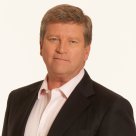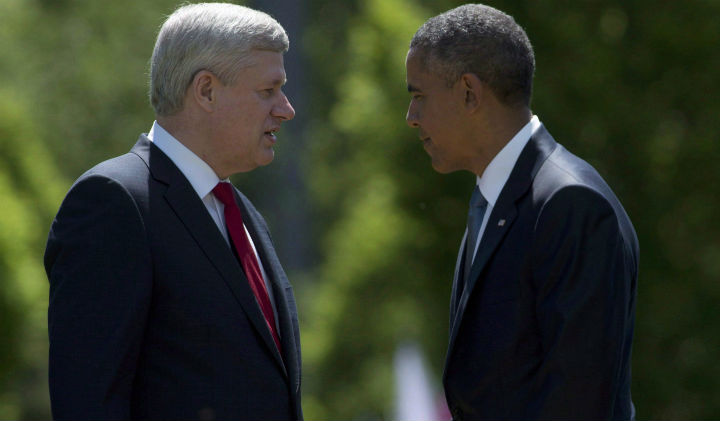There have been some epic fails in the relationship between Ottawa and Washington.

Like that time when Soviet ships were steaming to Cuba with nuclear missiles in 1962.
President John F. Kennedy had provided top secret photographs to Prime Minister John Diefenbaker to show him the seriousness of the crisis. Diefenbaker shrugged and called for an independent committee to determine who was right. Kennedy never forgave him and reduced Diefenbaker’s title to a one-word description of mid-level body part.
Or that time in 1983, when the first Prime Minister Trudeau was on his quest for world peace. He got into a shouting match with then-President Ronald Reagan at a meeting in London. That led to then-Under Secretary of State for Political Affairs Ronald S. Lauder to say Trudeau’s peace efforts were “akin to pot-induced behavior by an erratic leftist.”
The prime minister responded that he didn’t much care about the words of a “Pentagon pipsqueak.”
READ MORE: No Trump talk during Trudeau’s U.S. visit
So things haven’t always been great and they weren’t great recently under Stephen Harper’s government.
- Budget 2024 failed to spark ‘political reboot’ for Liberals, polling suggests
- Train goes up in flames while rolling through London, Ont. Here’s what we know
- Peel police chief met Sri Lankan officer a court says ‘participated’ in torture
- Wrong remains sent to ‘exhausted’ Canadian family after death on Cuba vacation
A mere two years ago, the Canadian government essentially told the U.S. ambassador to go get stuffed.
In April 2014, Bruce Heyman began his tenure as the president’s representative in Ottawa and within 10 days of his arrival he was put on a diplomatic “do not call” list. He was shunned and repeatedly humiliated by the Harper government.
Heyman, a gregarious financier from Chicago, expected better. After all, his predecessor, David Jacobson and his lively wife, Julie, had become the toast of the town.
Like Heyman, Jacobson was a lawyer from Chicago who had raised big money for President Barack Obama. Julie Jacobson and Vickie Heyman were likewise similar in their enthusiasm for the job and both were vibrant emissaries on the cultural front. So Heyman had every right to ask: “What gives?”
He did and he didn’t much like the answer. Harper, it turned out, was as mad as hell at Washington, primarily over Obama’s dithering on Keystone XL. Ten days after Heyman settled into the stately Lornado, the residence of the U.S. ambassador, Obama again delayed a decision on Keystone XL because of a court case in Nevada.
READ MORE: Rethink pipelines, 60 Canadian scientists tell Trudeau
Harper went sideways. He accused Obama of following ‘narrow politics” instead of the will of the American people. This added to the increasingly hostile menu of insults aimed at the American president from the Prime Minister’s Office.
Harper was enraged and decided Heyman would be the dog that he kicked when he came home at night.
According to sources, the PMO let it be known not only to cabinet but to the senior bureaucracy, that Heyman was not to be made to feel welcomed.
Senior Canadian officials followed those directions with gusto. Cabinet ministers refused to meet with the new ambassador; Deputy ministers would meet with him, but some would only read to him from a prepared statement, ending the meeting without questions or conversation.
Some went further to push Heyman’s nose into the diplomatic mess. At times, meetings would be cancelled just five minutes before they were scheduled. It was a deliberate, if not childish, snub that was meant to humiliate him.
If the Harper circle expected this would shame Heyman into being a more compliant and contrite diplomat, they were mistaken. Heyman simply did an end-run and got out of town.
He went to the provincial capitals and engaged directly with the premiers and the provincial bureaucracies.
At a certain point in all this, almost everyone thought: “What the hell is going on?”
It’s hard to pinpoint the moment, but the chill started to lift in the fall of 2014.
Canada wanted to be seen to be joining the fight against the Islamic State and, suddenly, Heyman became a hail-fellow-well-met. Canadian cabinet ministers started talking to him and American cabinet ministers and governors started coming to Ottawa. It was almost as if the clouds had parted.
Almost.
Harper was still in a sullen funk. He cancelled a North American summit in 2015 on the grounds that he had little to say to Obama while the Keystone XL decision remained undone.
Heyman moved more easily in Ottawa, but had not had so much as a 15-minute meeting with Harper.
That’s in sharp contrast to not only to Jacobson, who famously went snowshoeing with Laureen Harper, but to the last Democrat to occupy the residence, Gordon Giffin.
Back in the 1990s, Giffin was a larger than life diplomat, who was known to knock back very good scotch with former Prime Minister Jean Chretien, among others, and who apparently still does.
It’s not that Heyman was little Nell being tied to the tracks by “Snidely” Harper.
He’s from Chicago after all and he was a partner in Goldman Sachs — two things that hardly make a person shy or ill at ease in a crowd.
Heyman’s style occasionally offended some delicate Canadian political sensibilities. Former Industry Minister James Moore is a bear of a man, but was hurt that Heyman talked openly about what America wanted on border policies.
READ MORE: Justin Trudeau wants to make Canada a global environmental brand
In Canada, you see, public discussions are expected to be entirely private.
Today, Heyman’s life is immeasurably easier, even if the issues aren’t.
The American ambassador and his wife Vicky are again the toast of the town. He already has a close personal relationship with Prime Minister Justin Trudeau and, for the first time since the late night scotch swilling at 24 Sussex, an American president is hosting a Canadian prime minister at a glittering state dinner at the White House.
Keystone XL is dead, the softwood lumber agreement is in danger of unwinding and the fight against the Islamic State is inconclusive. But, at least everyone seems to feel better about it.
For Heyman, and Canada, it would have been better if these good vibrations had come a bit earlier. After all, Obama has all of 10 months left in office and really can’t do all that much for us.
But, there is an opening now for Canada to do something for ourselves.
As long as official Washington likes us, we could re-engage — not only in Washington but in the various states as well.
Our influence in the world lies squarely with the proposition that we can whisper sweet nothings into American political ears in a way that other countries can’t, and that we can decode American-speak better than most.
It would seem a good time to ramp this up. Doors don’t stay open forever.
Watch The West Block with Tom Clark Sundays at 11 a.m. in Ontario, Quebec, Manitoba and Saskatchewan, 12 p.m. in the Atlantic provinces and 10 a.m. in Alberta and B.C.




Comments